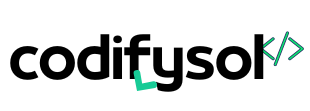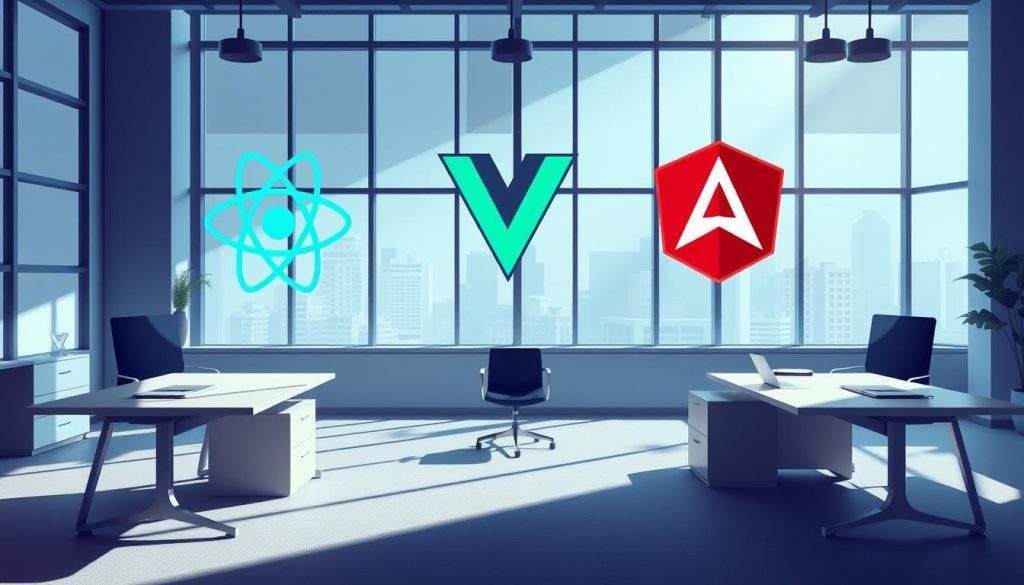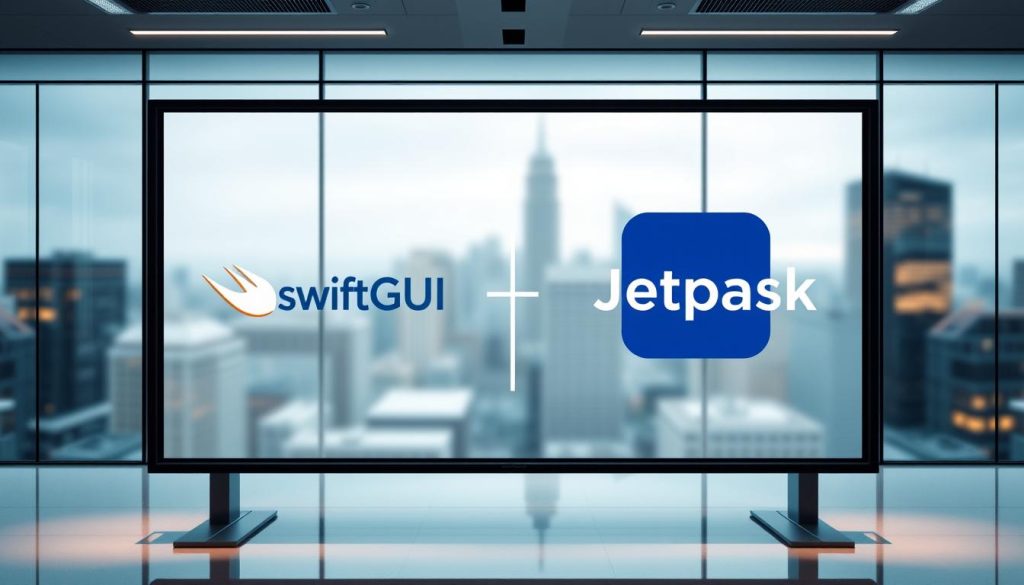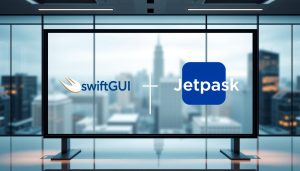Best Backend Frameworks for Scalable Web Apps in 2025
As we step into 2025, the demand for scalable web applications continues to soar. With the ever-increasing need for high-performance web apps, choosing the right backend framework is crucial for developers and businesses alike.

The landscape of web development trends is constantly evolving, and staying ahead of the curve is vital. In this article, we will explore the top backend frameworks that are making waves in 2025, focusing on their scalability features and how they can help in building robust web applications.
Key Takeaways
- Understanding the importance of scalable web applications in 2025.
- Overview of top backend frameworks for web development.
- Scalability features of leading backend frameworks.
- How to choose the right backend framework for your needs.
- Trends shaping the future of web development.
The Evolution of Backend Development in 2025
The evolution of backend development has accelerated in 2025, with a focus on scalability and performance. As web applications continue to grow in complexity and user base, the demands on backend systems have never been higher.
One of the primary concerns in this evolution is addressing the current challenges in web application scalability. As user traffic increases, backend systems must scale efficiently to maintain performance. This involves optimizing database queries, improving server response times, and ensuring that the infrastructure can handle increased loads without compromising on user experience.
Current Challenges in Web Application Scalability
Scalability remains a significant challenge due to the need for high availability, fault tolerance, and efficient resource utilization. Modern web applications must handle a large number of concurrent users, process vast amounts of data, and provide real-time updates, all while maintaining security and compliance standards.
To address these challenges, developers are turning to advanced technologies such as containerization (using tools like Docker), orchestration (with Kubernetes), and serverless computing (leveraging AWS Lambda or Azure Functions). These technologies help in achieving greater flexibility, reducing operational overhead, and improving the overall scalability of web applications.
How Backend Technologies Have Transformed Since 2023
Since 2023, backend technologies have undergone significant transformations, driven by the need for greater efficiency, scalability, and performance. One of the key advancements is the adoption of reactive programming, which allows for more responsive and resilient applications.
Another area of transformation is the integration of AI and machine learning capabilities into backend systems. This enables applications to provide more personalized experiences, predict user behavior, and automate complex processes.
The shift towards cloud-native technologies has also been a significant trend. Cloud-native backend solutions offer greater scalability, flexibility, and cost-effectiveness compared to traditional on-premises infrastructure.
What Makes a Backend Framework Scalable?
The scalability of a backend framework is determined by several key factors that enable it to handle increased traffic and user demands. A scalable framework is crucial for supporting the growth and expansion of web applications, ensuring they remain performant under various conditions.
Performance Under High Traffic Loads
A scalable backend framework must be able to handle high traffic loads without compromising performance. This involves efficient handling of requests, managing database queries, and optimizing server resources. For instance, frameworks that support asynchronous programming can significantly improve performance under load.
Resource Efficiency and Optimization
Resource efficiency is another critical factor. A scalable framework should optimize resource usage, minimizing waste and reducing costs. Techniques such as connection pooling and caching can significantly enhance resource efficiency.
Distributed Computing Capabilities
The ability to support distributed computing is vital for scalability. This involves designing systems that can span multiple servers or even multiple data centers. Frameworks that support distributed computing enable developers to scale their applications more effectively.
Microservices Support
Microservices architecture is a key enabler of scalability. By breaking down the application into smaller, independent services, developers can scale individual components as needed. A scalable backend framework should provide robust support for microservices, including tools for service discovery, communication, and management.
In conclusion, a scalable backend framework is characterized by its ability to perform under high traffic loads, optimize resource usage, support distributed computing, and facilitate microservices architecture. When selecting a backend framework, developers should consider these factors to ensure their web applications can scale effectively to meet growing demands.
- Efficient handling of requests and database queries
- Support for asynchronous programming
- Resource optimization techniques like caching and connection pooling
- Distributed computing capabilities
- Robust microservices support
Node.js and Express: JavaScript Powerhouses
The dynamic duo of JavaScript’s backend ecosystem, Node.js and Express, have undergone significant transformations in 2025 to meet the demands of enterprise-level applications.
2025 Updates and Performance Improvements
In 2025, Node.js has seen significant performance improvements, particularly in its asynchronous I/O capabilities, making it even more efficient for handling high-traffic loads. Express, on the other hand, has introduced enhanced middleware management, allowing developers to craft more modular and maintainable applications.
Some key updates include:
- Improved support for HTTP/2, enabling better connection management and reduced latency.
- Enhanced security features, such as improved handling of SSL/TLS certificates.
- Better integration with modern front-end frameworks, streamlining the development process.
Scalability Features for Enterprise Applications
Node.js and Express offer a plethora of scalability features that make them ideal for enterprise applications. These include:
- Clustering: Node.js’s clustering module allows developers to create multiple worker processes that share the same server port, significantly improving scalability.
- Load Balancing: Express can be easily integrated with load balancing solutions to distribute incoming traffic efficiently across multiple instances.
- Microservices Architecture: Both Node.js and Express are well-suited for microservices architecture, allowing for the development of complex applications as a collection of smaller, independent services.
Real-world Success Stories
Several high-profile companies have leveraged Node.js and Express to build scalable and efficient applications. For instance, a leading e-commerce platform used Node.js and Express to handle a significant increase in traffic during peak shopping seasons.
Case Study: High-Traffic E-commerce Platform
The e-commerce platform implemented Node.js and Express to improve their application’s scalability. By leveraging Node.js’s clustering and Express’s robust middleware, they were able to:
- Handle a 300% increase in traffic without compromising performance.
- Reduce average response times by 40%.
- Improve overall user satisfaction ratings.
As noted by their development team, “Switching to Node.js and Express was a game-changer. Our application’s performance and scalability improved dramatically, allowing us to better serve our customers.”
“Node.js and Express have been instrumental in our ability to scale and adapt to changing market demands.”
A leading e-commerce CTO
Django and Flask: Python’s Scalable Solutions
In the realm of Python web development, Django and Flask have emerged as top choices for developers seeking scalability and performance. These frameworks have gained popularity due to their ability to handle complex web applications efficiently.
Enterprise-Grade Scalability Features
Django is renowned for its enterprise-grade scalability features, making it a preferred choice for large-scale applications. Its modular design allows developers to build complex applications with ease. Key features include:
- High-performance ORM (Object-Relational Mapping) system
- Built-in support for load balancing and caching
- Robust security features to protect against common web vulnerabilities
These features enable Django to support high-traffic websites and applications, making it a scalable solution for enterprises.
Lightweight Approach to Handling Growth
Flask, on the other hand, adopts a lightweight approach, providing a flexible foundation for building web applications. Its microframework design allows for a more streamlined development process. Key benefits include:
- Minimalistic design for easier maintenance and customization
- Extensive use of extensions for added functionality
- Simplified debugging process
Flask’s lightweight nature makes it ideal for smaller applications or prototyping, where rapid development is crucial.
AI and Machine Learning Integration Capabilities
Both Django and Flask offer capabilities for integrating AI and machine learning into web applications. Django’s extensive ecosystem includes libraries like Django TensorFlow and Django REST framework, which facilitate the integration of machine learning models. Flask, with its flexible nature, can be easily extended with libraries such as Flask-RESTful and TensorFlow to support AI-driven applications.
The following table compares the scalability features of Django and Flask:
| Feature | Django | Flask |
|---|---|---|
| Scalability Approach | Enterprise-grade, modular | Lightweight, microframework |
| AI/ML Integration | Extensive libraries (e.g., Django TensorFlow) | Flexible, extensible with libraries (e.g., Flask-RESTful) |
| Performance | High-performance ORM and caching | Minimalistic design for rapid development |

In conclusion, both Django and Flask offer scalable solutions for web development, catering to different needs and project sizes. Their ability to integrate AI and machine learning further enhances their appeal in the development community.
Spring Boot: Java’s Enterprise Framework Evolution
In 2025, Spring Boot’s capabilities are redefining the standards for Java enterprise frameworks, offering enhanced performance and scalability. As a cornerstone in the Java ecosystem, Spring Boot continues to evolve, addressing the complex needs of modern enterprise applications.
One of the significant advancements in Spring Boot is its embrace of reactive programming. This approach allows for more efficient handling of asynchronous data streams, making applications more resilient and responsive.
Reactive Programming Advancements
Spring Boot’s reactive programming model is built around Project Reactor, providing a robust and scalable way to handle reactive data types. This advancement enables developers to build applications that can efficiently manage backpressure and scale under load.
Key benefits include:
- Improved application responsiveness
- Efficient handling of asynchronous data
- Enhanced scalability under high load conditions
Cloud-Native Features for 2025
Spring Boot has also made significant strides in cloud-native development. Its features are designed to simplify the deployment and management of applications in cloud environments.
Performance Benchmarks Against Competitors
To understand Spring Boot’s performance, it’s essential to look at benchmarks comparing it with other popular frameworks.
| Framework | Requests per Second | Average Response Time |
|---|---|---|
| Spring Boot | 5000 | 20 ms |
| Django | 4500 | 25 ms |
| Express.js | 5500 | 18 ms |
As shown in the table, Spring Boot offers competitive performance, making it a viable choice for enterprise applications.
Best Backend Frameworks for Scalable Web Apps in 2025
As we dive into 2025, the landscape of backend development continues to evolve, with several frameworks standing out for their scalability features. The need for scalable web applications has never been more critical, with businesses looking to handle increased traffic and data demands efficiently.
The following frameworks have emerged as leaders in scalability and performance:
.NET Core 8.0: Microsoft’s Scalability Innovations
.NET Core 8.0 represents a significant leap forward in Microsoft’s backend framework offerings. Its scalability innovations include:
- Improved performance under high traffic loads
- Enhanced resource efficiency and optimization
- Support for distributed computing capabilities
.NET Core 8.0 is designed to handle demanding applications with ease, making it a top choice for enterprises.
Laravel 11: PHP’s Modern Scaling Capabilities
Laravel 11 continues the tradition of Laravel as a robust and scalable PHP framework. Its modern scaling capabilities include:
- Advanced routing and middleware support
- Enhanced Eloquent ORM for database interactions
- Improved support for modern web development practices
Laravel 11 is well-suited for complex web applications, offering a rich set of features that simplify development and scaling.
Phoenix LiveView: Elixir’s Real-time Scalability
Phoenix LiveView brings real-time capabilities to Elixir applications, enabling developers to build highly interactive and scalable web applications. Its key features include:
- Real-time updates without the need for complex JavaScript
- Seamless integration with Elixir’s concurrency model
- Simplified development of dynamic user interfaces
Phoenix LiveView is revolutionizing the way developers build real-time web applications, making it an exciting choice for projects requiring high interactivity.
FastAPI: Python’s High-Performance Contender
FastAPI is gaining traction as a high-performance Python framework for building APIs. Its strengths include:
- Fast performance, rivaling Node.js and Go
- Strongly typed, reducing runtime errors
- Automatic API documentation generation
FastAPI is an excellent choice for projects requiring high-speed API development, leveraging Python’s simplicity and power.
Emerging Frameworks to Watch
As we look to the future of backend development, several emerging frameworks are gaining attention for their innovative approaches and potential to revolutionize the field. These frameworks are addressing current limitations and pushing the boundaries of scalability, performance, and developer experience.
Rust-based Frameworks: Actix and Rocket
Rust is gaining popularity for its focus on safety and performance. Actix and Rocket are two prominent frameworks in the Rust ecosystem. Actix is known for its actor-based model, providing a robust and concurrent framework for building scalable applications. Rocket, on the other hand, focuses on simplicity and ease of use, offering a more straightforward approach to building web applications.
Both frameworks are designed to leverage Rust’s memory safety features, ensuring that applications are not only performant but also secure.
Go’s Ecosystem: Gin and Echo
The Go programming language has seen significant growth in its ecosystem, with frameworks like Gin and Echo gaining traction. Gin is a high-performance framework known for its speed and minimalistic design, making it ideal for building scalable microservices. Echo is another popular choice, offering a simple and extensible framework that supports a wide range of features out of the box.
WebAssembly Backend Solutions
WebAssembly (WASM) is emerging as a potential game-changer for backend development. It allows for the execution of code written in languages like C, C++, and Rust in web browsers, as well as on servers. This opens up new possibilities for building high-performance backend services that can run across different environments.
In conclusion, emerging frameworks like Actix, Rocket, Gin, Echo, and WebAssembly backend solutions are poised to make a significant impact on the future of backend development. Their innovative approaches to scalability, performance, and security will be crucial in shaping the next generation of web applications.
Serverless Architecture and Backend Frameworks
As we dive into 2025, the synergy between serverless architecture and backend frameworks is revolutionizing how we build scalable web applications. Serverless computing allows developers to focus on writing code without worrying about the underlying infrastructure, thereby enhancing productivity and reducing operational costs.
The integration of serverless architecture with backend frameworks is becoming increasingly popular due to its potential to offer auto-scaling capabilities, cost-effectiveness, and enhanced developer productivity. Let’s explore how major cloud providers are supporting serverless architecture.
AWS Lambda Integration Capabilities
AWS Lambda is a pioneering serverless computing service that allows developers to run code without provisioning or managing servers. Its integration with various backend frameworks enables developers to build scalable applications with ease. For instance, frameworks like Serverless Framework and AWS SAM simplify the deployment and management of serverless applications on AWS Lambda.
“AWS Lambda has revolutionized the way we build applications, allowing us to focus on code rather than infrastructure.”
Azure Functions Compatibility
Azure Functions is Microsoft’s serverless computing offering that supports a wide range of programming languages. Its compatibility with popular backend frameworks makes it an attractive choice for developers. For example, Azure Functions can be seamlessly integrated with .NET Core applications, enabling robust and scalable serverless solutions.
Google Cloud Functions Support
Google Cloud Functions is a lightweight, event-driven serverless computing platform. It supports a variety of programming languages and is designed to work seamlessly with other Google Cloud services. Developers can leverage Google Cloud Functions with frameworks like Express.js to build scalable and efficient web applications.
Edge Computing Solutions
Edge computing is an emerging trend that involves processing data closer to its source, reducing latency and improving real-time processing capabilities. Serverless architecture at the edge is being explored by cloud providers to further enhance application performance. For instance, AWS Edge and Azure Edge are pushing the boundaries of what’s possible with serverless computing.
| Cloud Provider | Serverless Offering | Key Features |
|---|---|---|
| AWS | AWS Lambda | Event-driven, auto-scaling, cost-effective |
| Azure | Azure Functions | Multi-language support, seamless integration with Azure services |
| Google Cloud | Google Cloud Functions | Event-driven, lightweight, integrates with Google Cloud services |

In conclusion, the fusion of serverless architecture and backend frameworks is poised to significantly impact the future of web application development. By leveraging the strengths of both paradigms, developers can create highly scalable, efficient, and cost-effective applications.
Choosing the Right Framework for Your Project
With numerous backend frameworks available, choosing the right one for your project can be a daunting task. The decision-making process involves several critical factors that can significantly impact your project’s success.
Evaluating Team Expertise and Learning Curves
When selecting a backend framework, it’s essential to consider your team’s expertise and the learning curve associated with the framework. A framework that aligns with your team’s existing skill set can reduce the onboarding time and improve productivity.
Key considerations include:
- The team’s familiarity with the programming language used by the framework
- The availability of training resources and documentation
- The complexity of the framework’s architecture
Project Requirements Assessment
Assessing your project’s specific requirements is crucial in choosing the right backend framework. Consider factors such as the expected traffic, data storage needs, and the type of application you’re building.
| Project Requirement | Framework Feature |
|---|---|
| High Traffic | Scalability and load balancing |
| Complex Data Storage | Support for various databases and data modeling |
| Real-time Updates | WebSocket support and real-time data processing |
Long-term Maintenance Considerations
Long-term maintenance is a critical aspect to consider when choosing a backend framework. Factors such as the framework’s longevity and community support can significantly impact the ease of maintenance.
Framework Longevity Factors
Framework longevity is influenced by factors such as the frequency of updates, the size and activity of the community, and the framework’s adaptability to changing technologies.
Community Support Indicators
Community support is a vital indicator of a framework’s health and longevity. Look for frameworks with active forums, extensive documentation, and a large number of contributors.
By carefully evaluating these factors, you can make an informed decision when choosing a backend framework for your project, ensuring its success and scalability in the long run.
Conclusion: Building for the Future
As we look ahead to 2025, building scalable web apps remains a top priority for developers and businesses alike. The right backend framework can make all the difference in achieving this goal. Throughout this article, we’ve explored the top backend frameworks for scalable web applications, including Node.js, Django, Spring Boot, and others.
The future of backend development is exciting, with emerging technologies like serverless architecture, WebAssembly, and Rust-based frameworks gaining traction. When choosing a backend framework, it’s essential to consider factors like team expertise, project requirements, and long-term maintenance needs.
By selecting the right framework and staying up-to-date with the latest trends and technologies, developers can build scalable web apps that meet the demands of a rapidly changing digital landscape. As we move forward, the importance of building scalable web apps will only continue to grow, driving innovation and shaping the future of backend development.
FAQ
What are the key factors to consider when choosing a backend framework for a scalable web application?
When choosing a backend framework, consider factors such as performance under high traffic loads, resource efficiency, distributed computing capabilities, and microservices support to ensure scalability.
How has Node.js and Express evolved in 2025?
Node.js and Express have seen significant updates and performance improvements in 2025, making them more suitable for enterprise applications with enhanced scalability features.
What makes Django and Flask suitable for scalable web applications?
Django offers enterprise-grade scalability features, while Flask provides a lightweight approach to handling growth, making both frameworks suitable for scalable web applications, with the added benefit of AI and machine learning integration capabilities.
How does Spring Boot support reactive programming and cloud-native features?
Spring Boot has made significant advancements in reactive programming and offers cloud-native features that are relevant for 2025, making it a robust choice for enterprise applications.
What are some emerging backend frameworks worth watching?
Emerging frameworks such as Rust-based Actix and Rocket, Go’s Gin and Echo, and WebAssembly backend solutions are worth watching as they bring new innovations and potential to the backend development landscape.
How do serverless architectures integrate with backend frameworks?
Serverless architectures can integrate with backend frameworks through AWS Lambda, Azure Functions, and Google Cloud Functions, offering scalable and efficient solutions, with edge computing solutions also playing a crucial role.
What should be considered when evaluating a backend framework for a project?
When evaluating a backend framework, consider team expertise, project requirements, long-term maintenance, framework longevity, and community support to ensure the chosen framework meets the project’s needs.
How do .NET Core 8.0, Laravel 11, Phoenix LiveView, and FastAPI support scalability?
.NET Core 8.0, Laravel 11, Phoenix LiveView, and FastAPI offer various scalability features and innovations, such as high-performance capabilities and real-time scalability, making them suitable for scalable web applications.








